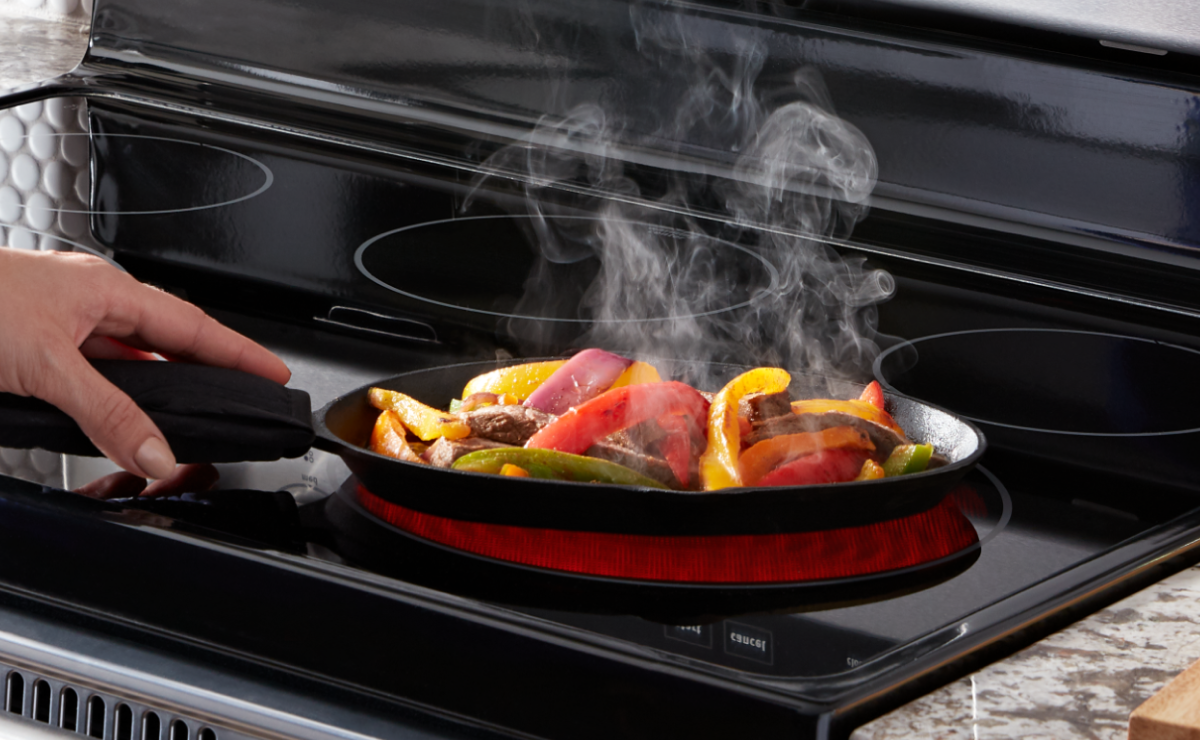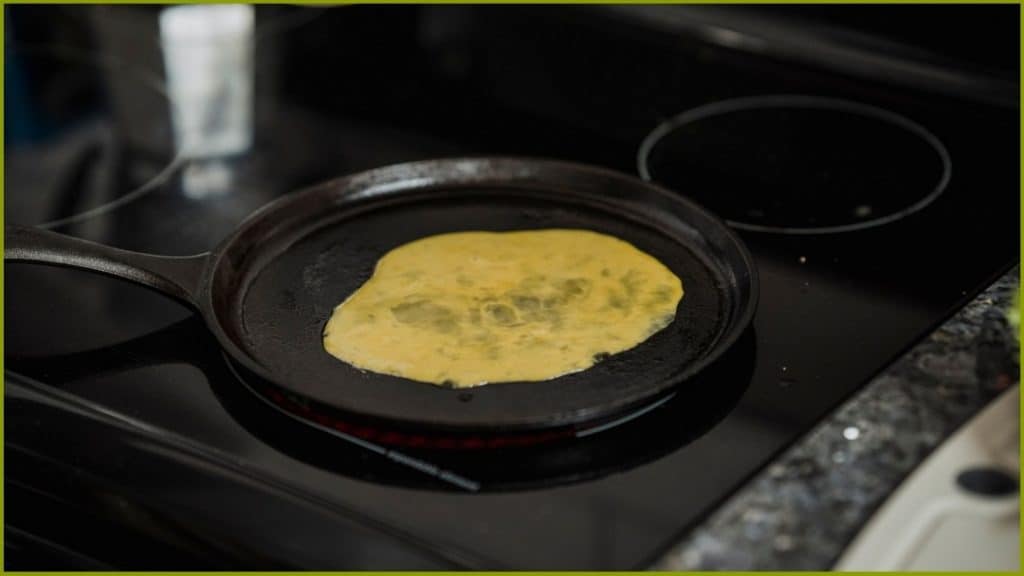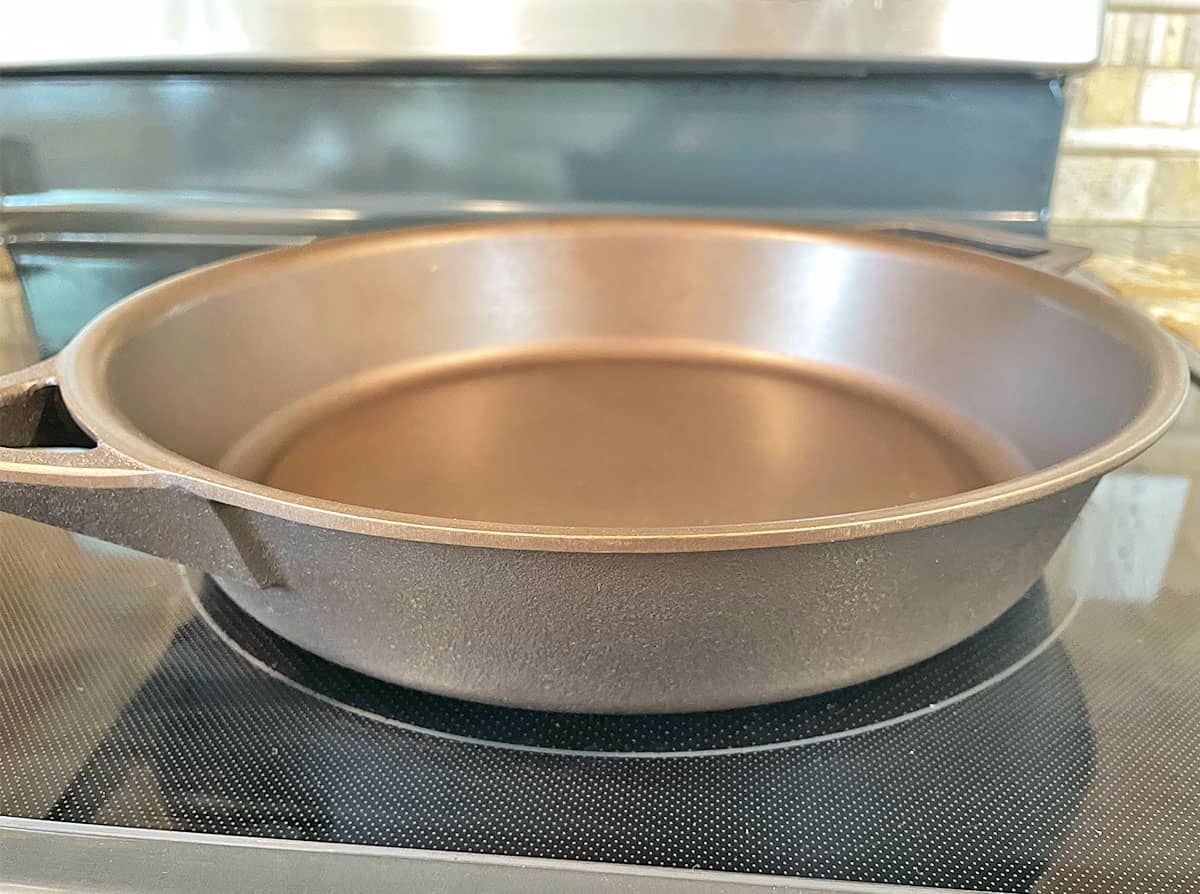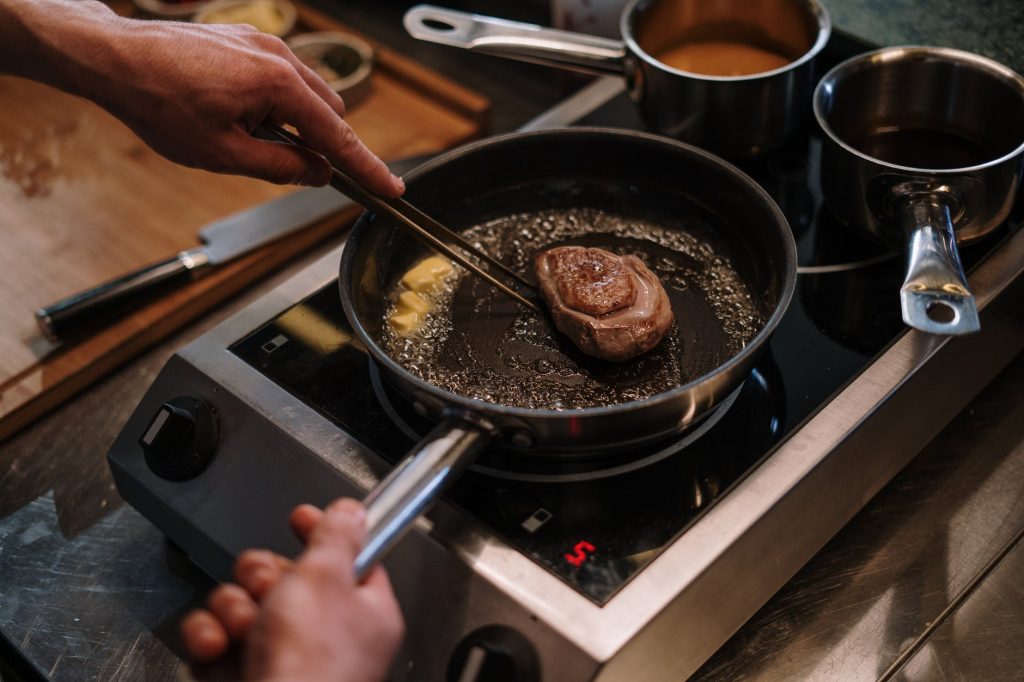Using a Cast Iron Skillet on a Glass Top Stove
I. Introduction to Using a Cast Iron Skillet on a Glass Top Stove

Using a cast iron skillet on a glass top stove can provide excellent heat retention and distribution, as well as versatility in cooking techniques. However, there are important considerations and steps to ensure compatibility and safety.
A. Benefits of Cooking with a Cast Iron Skillet
- Excellent Heat Retention and Distribution: Cast iron skillets are known for their ability to retain and distribute heat evenly. This allows for consistent cooking temperatures and optimal browning of food.
- Versatility for Various Cooking Techniques: Cast iron skillets can be used for a range of cooking techniques, including searing, sautéing, frying, baking, and even grilling. Their ability to withstand high temperatures makes them suitable for different types of dishes.
B. Considerations for Using Cast Iron on a Glass Top Stove
- Ensuring Compatibility and Safety: Glass top stoves require cookware with flat and smooth bottoms to ensure even heat distribution. Cast iron skillets can be compatible with glass top stoves if certain precautions are taken.
- Preventing Scratches and Damage to the Glass Surface: Cast iron skillets, especially those with rough or uneven bottoms, can potentially scratch or damage the glass surface of a glass top stove. Proper care and precautionary measures are necessary to prevent any damage.
II. Choosing the Right Cast Iron Skillet for a Glass Top Stove

Choosing the right cast iron skillet for a glass top stove is crucial to ensure compatibility and optimal cooking performance.
A. Flat and Smooth Bottom Surface
- Avoiding Skillets with Raised or Rough Bottoms: Look for cast iron skillets with flat and smooth bottoms. Avoid skillets with raised patterns or rough finishes, as they can potentially scratch or damage the glass surface.
- Testing for Flatness: Before using a new or unfamiliar cast iron skillet, test its flatness by placing a ruler or straight edge across the bottom surface. If there are any gaps or rocking, it may not be suitable for use on a glass top stove.
B. Size and Weight Considerations
- Optimizing Heat Distribution and Efficiency: Choose a cast iron skillet that matches the size of the burner on your glass top stove. This helps to optimize heat distribution and efficiency during cooking.
- Handling and Storage Convenience: Consider the weight and size of the cast iron skillet for ease of handling and storage. A skillet that is too heavy or large may be difficult to maneuver, especially on a glass surface.
III. Preparing the Glass Top Stove for Cast Iron Skillet Use

To ensure safe and effective use of a cast iron skillet on a glass top stove, it’s important to prepare the stove surface properly.
A. Cleaning and Inspecting the Stove Surface
- Removing Any Debris or Residue: Clean the glass surface of the stove thoroughly, removing any food debris or residue that could potentially cause scratching or uneven heating.
- Checking for Any Damage or Cracks: Inspect the glass surface for any damage or cracks. Using a cast iron skillet on a damaged surface can lead to further problems and potential safety hazards.
B. Using a Heat Diffuser or Cast Iron Skillet Mat
- Protecting the Glass Surface from Direct Contact: Consider using a heat diffuser or a cast iron skillet mat to provide an additional layer of protection between the cast iron skillet and the glass surface. This helps to prevent direct contact and minimize the risk of scratching or damage.
- Ensuring Even Heat Distribution: A heat diffuser can also help to distribute heat evenly, reducing the risk of hot spots and improving cooking performance.
IV. Cooking Techniques and Tips for Cast Iron Skillet on a Glass Top Stove

Cooking with a cast iron skillet on a glass top stove requires some special techniques and considerations to ensure optimal results.
A. Preheating the Skillet and Stove
- Allowing Sufficient Preheating Time: Cast iron skillets require proper preheating to evenly distribute heat. Preheat the skillet on low to medium heat for at least 5-10 minutes before adding any ingredients.
- Adjusting Heat Settings for Optimal Results: Glass top stoves can heat up quickly, so it’s important to adjust the heat settings accordingly. Start with medium heat and make adjustments as needed to maintain the desired cooking temperature.
B. Proper Handling and Care During Cooking
- Avoiding Dragging or Sliding the Skillet: When moving the cast iron skillet on a glass top stove, lift it instead of dragging or sliding it. This prevents scratches or damage to the glass surface.
- Using Oven Mitts or Pot Holders for Safety: Cast iron skillets retain heat for a long time. Use oven mitts or pot holders when handling the skillet to avoid burns and protect your hands from the hot handle.
V. Cleaning and Maintenance for Cast Iron Skillet on a Glass Top Stove

Proper cleaning and maintenance of the cast iron skillet is crucial to keep it in good condition and prevent damage to the glass top stove.
A. Proper Cooling and Cleaning Techniques
- Allowing the Skillet to Cool Completely: After cooking, allow the cast iron skillet to cool completely before cleaning. Placing a hot skillet directly on a cool glass surface can cause thermal shock and potentially crack or damage the glass.
- Cleaning with Mild Soap and Water: Clean the cast iron skillet with warm water and a mild dish soap. Use a soft sponge or brush to gently scrub away any food residue. Avoid using abrasive cleaners or steel wool that can damage the seasoning or the glass top stove.
B. Seasoning and Maintenance
- Regular Seasoning for Optimal Performance: Season the cast iron skillet regularly to maintain its non-stick surface and prevent rust. Apply a thin layer of oil to the skillet’s surface and bake it in a preheated oven at 375°F (190°C) for about an hour. This process helps to build up a protective layer and maintain the skillet’s seasoning.
- Addressing Common Issues and Rust Prevention: If rust develops on the cast iron skillet, scrub it off with steel wool or a stiff brush. Re-season the skillet to restore its non-stick surface and prevent further rusting. To prevent rusting in the first place, ensure the skillet is completely dry before storing it, and avoid leaving acidic or moisture-rich foods in the skillet for prolonged periods.
Using a cast iron skillet on a glass top stove can provide you with the exceptional heat retention and versatile cooking capabilities of cast iron. This comprehensive guide has provided insights into proper usage and care for using a cast iron skillet on a glass top stove. By choosing the right skillet, preparing the stove surface, and following proper cooking and cleaning techniques, you can enjoy the benefits of cast iron cooking while ensuring the safety and longevity of your glass top stove. So, don’t hesitate to bring out your cast iron skillet and savor the delicious results it can deliver on your glass top stove.
